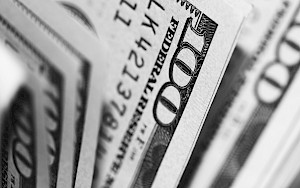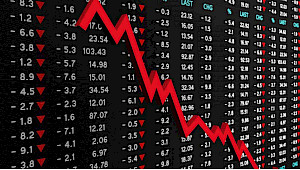The Fed’s Inescapable Trap
July 20, 2020Op-Ed By Frank Giustra
Published in the Vancouver Sun - Jul 13, 2020
Trust is a fickle thing. It’s there until it isn’t. This is especially true with paper currencies. Their value is based on trust that the sovereign issuer will act faithfully and responsibly. The standards for a reserve currency are even higher given their status in global trade and finance. Throughout history, there have been many reserve currencies and they have all failed, eventually. Every one.
The average shelf life of a reserve currency is approximately 100 years. Can anyone today recall the importance of the French Livre or the Dutch Guider in world trade? They were the “U.S. dollar” of their day. At their height, no one questioned their durability much the same as, until recently, most didn’t question the durability of the U.S. dollar. But for a few keen observers, the writing has been on the wall for several decades.
It first caught my attention in the late 1990s. I started to see a change in behaviour by the Federal Reserve under Alan Greenspan. He was coming to the rescue of markets under the guise of protecting the financial system with increasing frequency. First it was the bail out caused by the demise of the hedge fund Long Term Capital Management in 1998. During this same period, Greenspan — with the assistance of the media — helped fuel the dot com bubble which finally burst in 2000. By the time the 9/11 terrorist attacks occurred in September 2001, the Fed, under Greenspan, began its policy of keeping interest rates “accommodative“ permanently and also showing blatant disregard of its independence from federal government policy.
By then the behaviour of the Fed and the federal government had started to look familiar. And any student of history knows that certain patterns repeat over and over throughout the centuries. In particular, the rise and fall of currencies follow very recognizable trajectories. Historically, the rise of reserve currencies is based on a gold backing which has a tendency to create a fiscal discipline. As countries rise to world power status, the temptations to loosen those shackles become too tempting. It happens slowly at first, but eventually these countries untether their connection to gold completely. The demise of the currency happens over decades as the countries under-produce, over-consume, pile on debt, engage in endless wars and provide easy credit. Sound familiar?
It was obvious immediately after 9/11, when the Fed dropped its rates to near zero and the federal government launched its forever war on terror while proving tax cuts to its citizens and encouraging them to consume more. America’s forever wars have literally cost trillions of dollars. And for what purpose? What has the U.S. achieved by invading Iraq and Afghanistan? It’s a textbook beginning to a foreseeable end.
Greenspan set the stage for the 2008 crisis with his artificially low rates. Greenspan begat Ben Bernanke, who also refused to acknowledge the looming crisis until it was too late. You can always count on the Fed to say the right thing — after it’s no longer of any practical use. And you can count on the Fed to come to the rescue of the markets while providing no solution to the real economy. The monetary and fiscal bailout that followed the 2008 crisis managed to rescue the markets and created the largest debt bubble in history and massive speculation that exists to this very day.
Tragically, it also gave America the greatest levels of inequality in the developed world. The measurements are many, but one caught my eye recently: While the ‘one per cent’ owns nearly $30 trillion of assets, the bottom half owns less than nothing. Meaning they have more debts than assets.
Bernanke begat Janet Yellen and Yellen begat Jerome Powel and it seems they have all taken the same approach. A decade ago there was at least a pretence that rates would be normalized and the bloated Fed balance sheet unwound. But in truth, it would be mathematically impossible to do either. The result would have imploded the markets and driven the economy into depression. Never mind the inability of the U.S. government to service its massive and ever growing debt.
Unfortunately, the mistake was made during the Greenspan years and by the time the 2008 crisis hit, the trap the Fed created became inescapable. The warnings by those of us who spoke up at the time were drowned out by the talking heads on Wall Street and by certain financial media outlets.
In January 2019, I wrote that we were heading towards another financial crisis and that this time it would likely be worse than 2008. I would have never predicted a pandemic as the cause. But the cause was never the point. It was bound to be something. The table was set.
Powel recently acknowledged what many have known all along. We are now in a period of forever zero rates and endless money printing. History has proven time and time again, that this will not end well. Trust is already waning. China may be the first to exit the U.S. dollar. America’s policy of economic containment and its potentially long campaign over trade and technology is giving China good reason to diversify out of their massive dollar holdings. There is no current alternative to the U.S. dollar, so some other global trading and finance unit — perhaps one made up of a combination of currencies or tied to a basket of commodities — will eventually emerge. Whatever it is, I just hope that the transition to it will be a peaceful one.
The days of U.S. dollar supremacy are numbered. The timing can be debated, but it’s a mathematical certainty.
Originally posted on vancouversun.com










